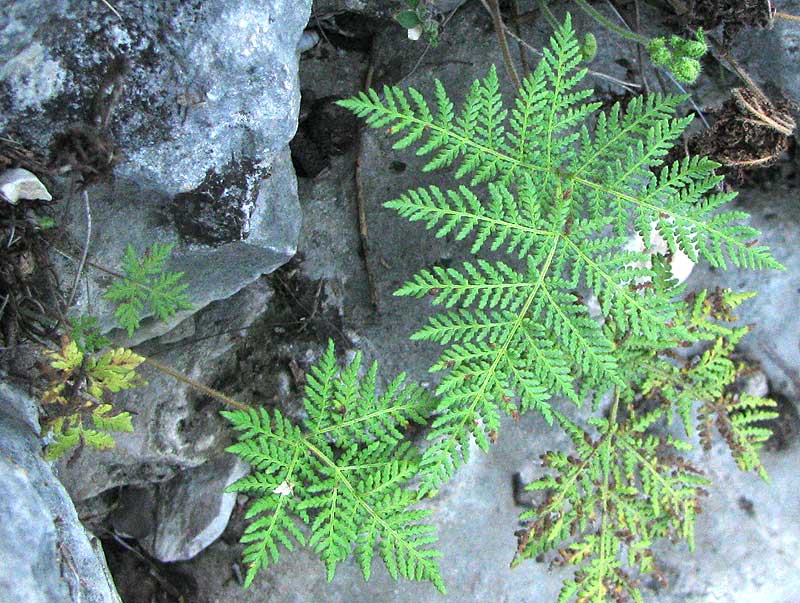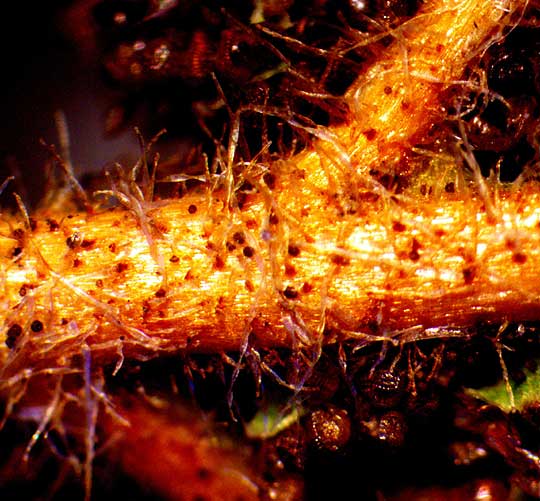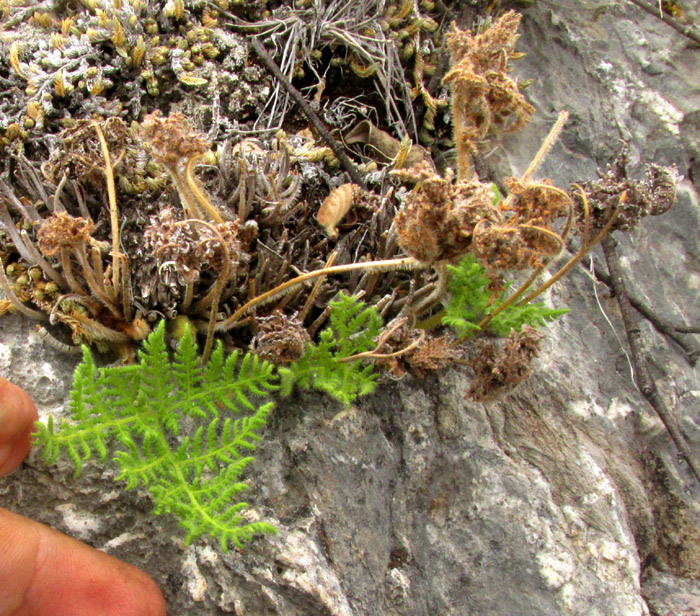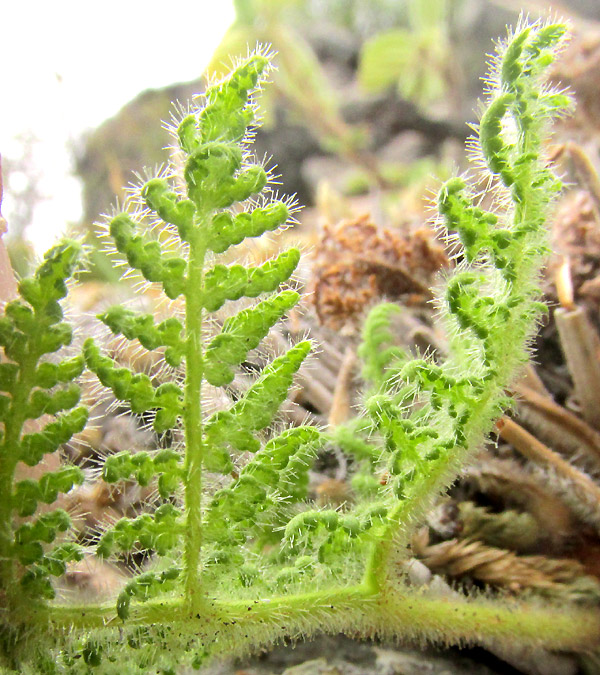Excerpts from Jim Conrad's
Naturalist Newsletter

from the June 30, 2013 Newsletter issued from the Frio Canyon Nature Education Center in the valley of the Dry Frio River in northern Uvalde County, southwestern Texas, on the southern border of the Edwards Plateau; elevation ~1750m (~5750 ft); N29.62°, W99.86°; USA
WHITE-FOOTED LIP FERN
Maybe the most exciting find on Dave's ranch was the ankle-high fern shown above growing from fissures in limestone rock forming the rocky bottom of a dry arroyo.
I'd never seen a frond exactly like that, but as soon as the blade was turned over a certain feature immediately suggested that this new-for-me species belonged to a group of ferns of which we've already found several species in this area. That was a shocker, because already I was astonished that so many of this group had been found. Below you can see what appeared on the frond's underside:

The tiny, spherical, shiny, brownish things are baglike sporangia, inside which spores are formed, and the meaningful feature that caught my eye is that the sporangia arise along the frond's down-curving pinna margins. Most sporangia on the undersurfaces of fronds are arranged in groupings called sori, and the sori are strewn across the fronds' lower surface, often in systematic and distinctive patterns. This arising from inside down-curving margins is characteristic of the group of ferns known as the lip ferns, genus Cheilanthes. Cheilanthes is by far the largest and most diverse genus of arid-land (xeric) ferns.
Having recognized the genus, it was easy to look up on the internet the various species occurring in this region. Soon I knew I had a challenge.
For, the Flora of North America makes clear that two very similar, closely related fern species occur in our area: The White-footed Lip Fern, Cheilanthes leucopoda*, of very limited distribution, known only from four limestone-bedrocked counties here in southwestern Texas and a spot across the Rio Grande in Mexico's Coahuila state; it has straw-colored petioles and its hairs are not tipped with sticky glands. The other species, Kaulfuss' Lip Fern, Cheilanthes kaulfussii, has reddish-purple to dark brown petioles and its hairs are indeed tipped with sticky glands. It's distributed from South America north into our part of Texas, mostly on igneous outcrops, so it's much more widely distributed.
Thing is, our fern is somewhat intermediate, possibly a hybrid. It's on limestone, its petioles are straw colored and its hairs are predominately not tipped with glands -- all like the White-footed Lip Fern. However, there are many NON-stalked glands dotting the veins' surfaces, which the Flora of North America doesn't mention. You can see what I mean below:

Pictures on the Internet of vein hairs on Kaulfuss' Lip Fern show the hairs as very conspicuously tipped with glands.
So, I've met a new lip fern species, and my impression is that it's the White-footed Lip Fern, but maybe bearing some genes of Kaulfuss' Lip Fern. And this is great, because neither of those fern species is much documented. By documenting this find we're helping future researchers who will be very happy, and maybe perplexed, to see what we've found.
Entry dated March 9, 2024, from notes taken about 2kms west of Higuerillas, Municipality of Cadereyta de Montes; N20.9086°, W99.7865°, elevation ~1760 meters (~5760 feet); on greywacke sandstone cap of hill; area constituting a narrow belt of the extreme southern extension of the Chihuahuan Desert, Meridional Subregion; central Querétaro state, MÉXICO
WHITE-FOOTED IN MEXICO

The above bunch of fronds had been cropped by roving feral burros, and dried crisp by the ongoing two-year severe drought, but some fresh ones had just unfurled.

The single fully expanded frond's form exactly matched that of the widely spread Glandular Lip Fern.

However, up close and seen from below, the blade's hairs were much longer and the glands atop the hairs weren't as conspicuous as on other fronds I've seen.

Above is a view of the upper surface.